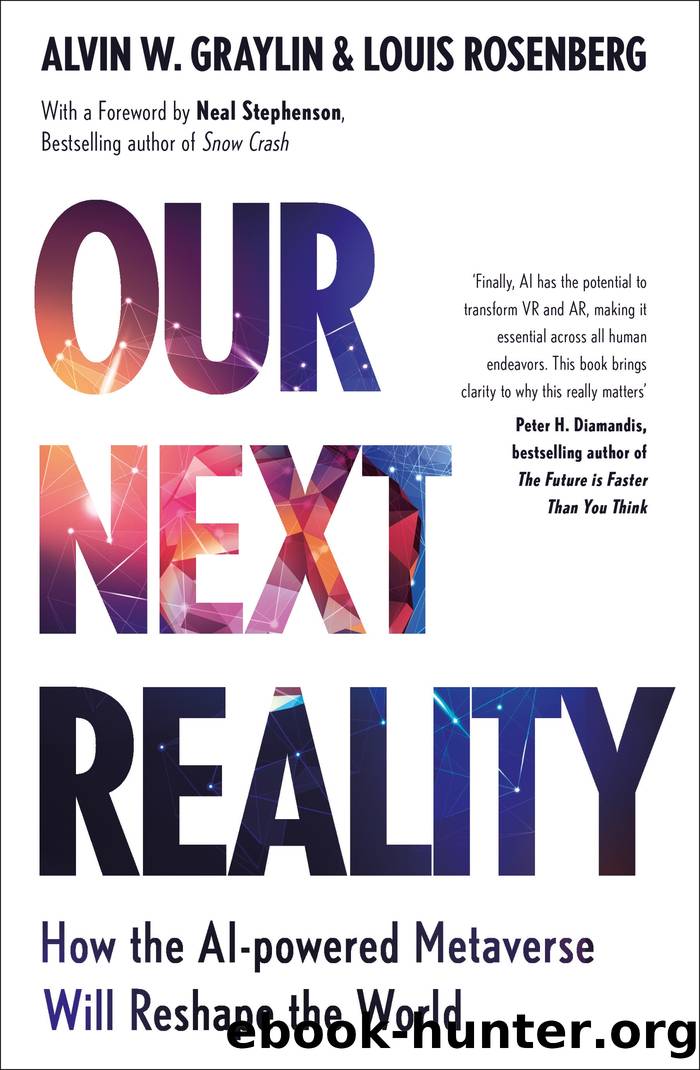Our Next Reality by Alvin Wang Graylin

Author:Alvin Wang Graylin
Language: eng
Format: epub
Publisher: Quercus
Figure 8.8 VR enhances gym experience: 2.4X excitement, 4X retention.
Source: Guo Yingjun, Beijing Sport University Integration Laboratory, A study of the effect of immersive environments on willingness to exercise, 2021, Device/Content: HTC Vive Pro + AUDIO TRIP
METAVERSE ADDICTION
Extending from the last section on long-duration use, thereâs now significant concern over the issue of cyber-addiction, and especially related to XR given its increased immersion. I asked my team to investigate this matter a few years ago, and we were able to find a researcher, Dr Chen, from the Communication University of China, who had studied traditional online and gaming addiction research in the past. Over about six months during the winter of 2021 and spring of 2022, two studies were conducted. The first one was to evaluate the addictive tendency of single-user 2D games versus VR games, and investigated which of several intervention mechanisms were the most effective in helping users managed their usage time to a healthy level. The second study added a social aspect to the content and looked at how that may impact the addictive nature of the medium. The users utilized the Vive Focus3 and played Half Life Alyx (first-person VR adventure) for the first study and RecRoom (VR casual social) for the second study.
As the results show, VR games tend to exhibit 44 per cent more addictive qualities versus 2D games (which were already not low) (Figure 8.9). And if we add in the social factor to XR gaming, the addictive tendencies go up even more to over two times versus 2D gaming (Figure 8.10). Young people and males had a tougher time controlling their urge to play, while adult and female users were more disciplined. There were three potential intervention techniques that the researchers suggested testing: self-restraint, auto reminders and system mandate (Figure 8.11). Self-restraint mainly involved users getting a verbal suggestion from the researcher at the beginning of the session. Auto-reminders involved the system providing real-time notifications after a certain period of use. And, finally, the system-mandate option involved having the system lock after the play time was exceeded. During the first few sessions, self-restraint and auto-reminders worked fine and were accepted by the subjects, but the system mandate garnered negative initial feedback. However, as time progressed and the content became more engaging, we find that self-restraint was no longer effective and the system mandate method ended up being the most effective technique long-term. In terms of the best overall model, it seems the system reminder method had the most stable results and was able to maintain its effectiveness and acceptance throughout the study. However, for users with self-control issues, the system mandate technique is probably the most appropriate model to prevent abuse. Given the reduced self-restraint of younger users, itâs key that both parents and the XR industry take greater responsibility to educate and manage the potential risks (see Figures 8.11 and 8.12, which show multiple charts from the VR addiction study).
Download
This site does not store any files on its server. We only index and link to content provided by other sites. Please contact the content providers to delete copyright contents if any and email us, we'll remove relevant links or contents immediately.
| Computer Vision & Pattern Recognition | Expert Systems |
| Intelligence & Semantics | Machine Theory |
| Natural Language Processing | Neural Networks |
Algorithms of the Intelligent Web by Haralambos Marmanis;Dmitry Babenko(7860)
Hadoop in Practice by Alex Holmes(5664)
Jquery UI in Action : Master the concepts Of Jquery UI: A Step By Step Approach by ANMOL GOYAL(5517)
Life 3.0: Being Human in the Age of Artificial Intelligence by Tegmark Max(4520)
Functional Programming in JavaScript by Mantyla Dan(3726)
The Age of Surveillance Capitalism by Shoshana Zuboff(3432)
Big Data Analysis with Python by Ivan Marin(3090)
Blockchain Basics by Daniel Drescher(2896)
The Rosie Effect by Graeme Simsion(2716)
WordPress Plugin Development Cookbook by Yannick Lefebvre(2625)
Hands-On Machine Learning for Algorithmic Trading by Stefan Jansen(2540)
Test-Driven Development with Java by Alan Mellor(2536)
Applied Predictive Modeling by Max Kuhn & Kjell Johnson(2487)
Dawn of the New Everything by Jaron Lanier(2441)
Data Augmentation with Python by Duc Haba(2385)
The Art Of Deception by Kevin Mitnick(2303)
The Infinite Retina by Robert Scoble Irena Cronin(2258)
Rapid Viz: A New Method for the Rapid Visualization of Ideas by Kurt Hanks & Larry Belliston(2200)
Principles of Data Fabric by Sonia Mezzetta(2200)
